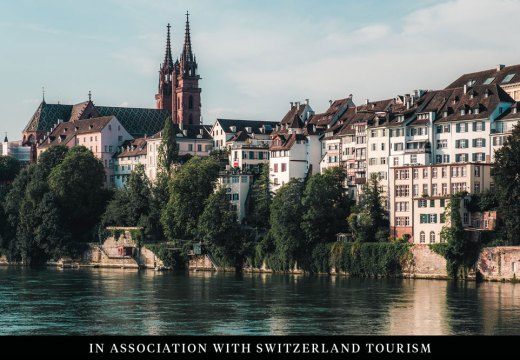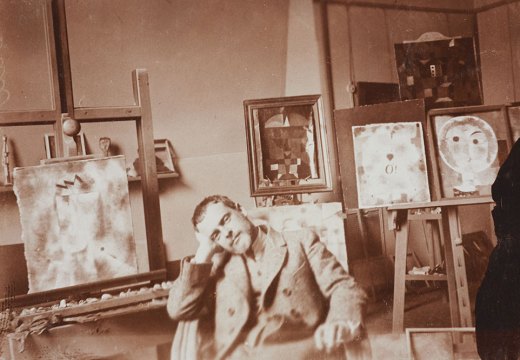Switzerland’s cities are home to some of the greatest museums and cultural venues in Europe. What better way to discover them than by following the tips of art-world insiders who have made their homes there and have a fast-track into the best that the Swiss cultural scene has to offer? In the latest in our ‘My Cultural City’ series, Nina Zimmer, director of the Kunstmuseum Bern and the Zentrum Paul Klee, selects her must-see museums and other highlights in the citadel of culture that is the Swiss capital – and in neighbouring Thun, the picturesque gateway to the Bernese Oberland.
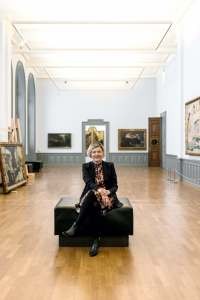
Nina Zimmer. © CH Media
Bern gave me my first experience of Switzerland: I came to the Paul Klee Foundation as an intern in 1997. So when the opportunity arose to lead the Zentrum Paul Klee and the Kunstmuseum Bern, I knew there was a lot of potential. The two institutions had just been joined and I was offered the chance to be the first director in charge of both. Plus the Gurlitt estate had recently been left to the Kunstmuseum: I saw the possibility to participate in the discussion about how Swiss institutions should engage with the country’s role in the international art market of the 1930s and 1940s, which was directly and indirectly affected by the policies of Nazi Germany. It felt like a blue-sky moment.
Bern itself is something of a shy capital city, but that shouldn’t put visitors off. Quite the opposite. The city has a long and layered artistic history, which is rich in different periods. That means there’s a lot to discover here. Any visitor ought to start with the old city centre, which is a UNESCO World Heritage site: much of it was rebuilt from the 15th century onwards, and it’s a delight to walk through the arcades and admire the medieval fountains and the painted facades of the buildings. My home is in the old city and I often say that it feels like I live in a vast sculpture. At its heart is Bern Minster, which is celebrating its 600th anniversary this year. It has an extraordinary gothic vision of the Last Judgement over the portal, which survived the Reformation. The vision of hell is a delight.

The tympanum of the central portal at Bern Minster. Courtesy Bern Welcome
The modern history of the city is fascinating, too, particularly when you consider some of the people who stayed or lived here. I always like to show visitors where Lenin lived in 1914–15, as well as the grave of Mikhail Bakunin in the Bremgarten Cemetery: they’re unexpected figures to find in the capital of Switzerland, perhaps, given that the country is so well known as a centre of capitalism. Albert Einstein is a big draw for international visitors from all manner of backgrounds. He developed his theory of relativity in the city when he lived here in the early 20th century – and the best place to learn about his time in Bern is at the Einstein House.

Bern Old Town. Courtesy Switzerland Tourism
When it comes to artists, Paul Klee is obviously a great attraction. He was born near Bern and grew up in the city. The beautiful building that Renzo Piano created for the Zentrum Paul Klee, with its three signature waves, holds more than 4,000 works by Klee and is the hub of Klee research: all Klee-related exhibitions worldwide start here. The institution is proudly multi-disciplinary, with its star-studded musical programme and regular readings by major contemporary authors. But if I were to celebrate another local figure, I would go for the curator Harald Szeemann. He was the director of the Kunsthalle Bern in the 1960s, inviting Christo and Jeanne-Claude to wrap their first building – the Kunsthalle itself – and staging the influential ‘Live in Your Head: When Attitudes Become Form’ in 1969. Since Szeemann’s time, the Kunsthalle has been a leading international space for contemporary discourse and discussion. It has a really interesting Monika Baer exhibition this autumn (until 12 December).
Bern is a city for young artists. We have an incredible, intensive network of experimental ‘offspaces’ here, as well as an amazing art school and the international Paul Klee summer academy. These days, many artists leave the city in their twenties and perhaps come back later. During the Renaissance, though, Bern was a centre for artists. You really get that sense in the Kunstmuseum Bern, with its amazing early collections – works by Niklaus Manuel Deutsch, for example, and by the Berner Nelkenmeister [the Bern Master of the Carnation]. It’s with these artists that art history really starts in Bern.

The Kunstmuseum Bern. Courtesy Switzerland Tourism
The museum’s collection spans medieval to contemporary art. It’s very strong in Swiss painting from the 19th century – the time of nation building – and is the main hub for work by Albert Anker and Ferdinand Hodler. In fact, one day trip I’d highly recommend is a visit to the studio of Anker in nearby Ins, adjacent to where they’re building a new education centre (Centre Albert Anker). The studio is as Anker left it, with its original props and equipment, all looked after by the family: a descendant of Anker welcomes you and gives you a tour of the studio. It’s a unique place.
The Kunstmuseum Bern was also the first museum in Switzerland to focus extensively on non-European contemporary art: it has staged exhibitions of contemporary Chinese and Korean collections, and was one of the first institutions in the country to show contemporary African art. That internationalism dovetails neatly with the direction that the Zentrum Paul Klee has taken recently – and with the legacy of Klee, who has always been an international artist and a central figure for non-European modernists. Our exhibition programme is really trying to look at Klee and his reception from a global perspective, which includes organising exhibitions in Brazil and Chile, in Japan and China. We’re currently researching art from the Middle East, a region in which many artists were drawn to modernism through the figure of Klee, as well as Ethiopian and Eritrean artists inspired by him. It’s our job to bring Paul Klee to the world, but we also want to bring the world to the Zentrum Paul Klee.
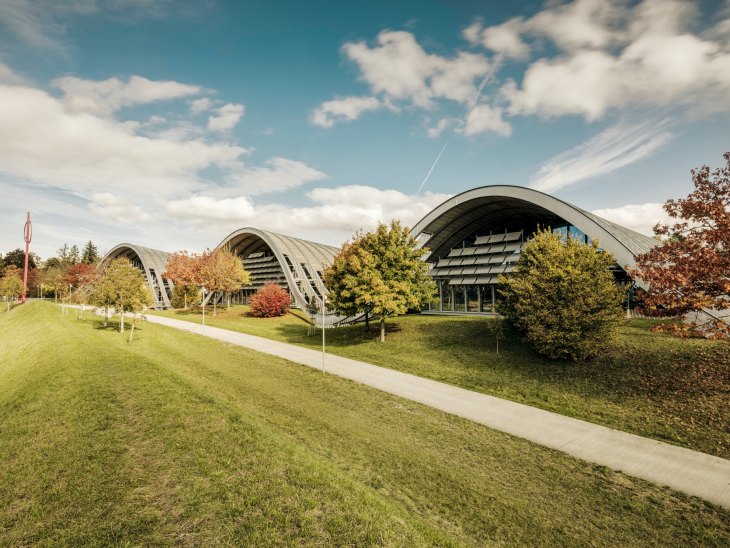
The Zentrum Paul Klee, its headquarters designed by Renzo Piano and opened in 2005. Courtesy Switzerland Tourism
There are plenty of places to explore near Bern, such as the bilingual town of Biel/Bienne or the historical textile collections at the Abegg Foundation in Riggisberg. From the capital, it’s only a short train ride to Thun, a picturesque town on Lake Thun. Stroll along the distinctive raised pavements of the old town and then have a coffee on the shore of the lake and enjoy the Alpine view. It’s easy to understand why figures such as Goethe and Brahms were drawn here.
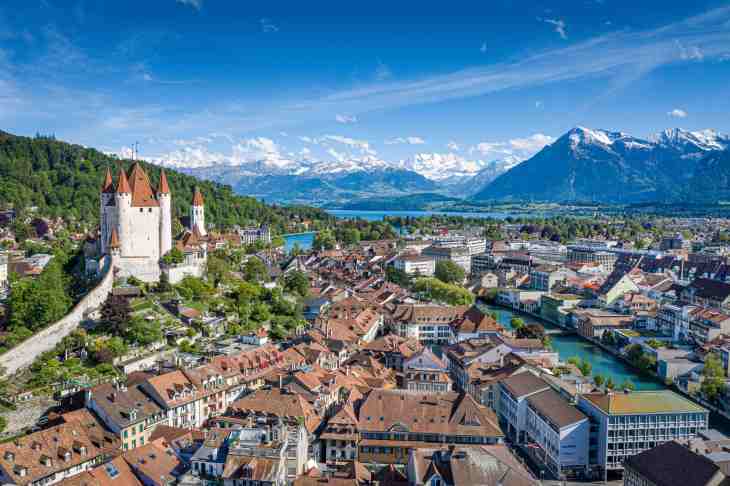
The centre of Thun and Thun Castle. © Christoph Gerber
For another type of view, the Thun Panorama is well worth a visit: it’s the oldest surviving circular painting in the world, painted by Marquard Wocher in the early 19th century and nearly 40 metres long. The Kunstmuseum Thun is strong on Swiss art, including landscape painting and – perhaps more unexpectedly – Pop art made in Switzerland. And for the full Romantic experience, you should probably visit Thun Castle – the donjon dates back to around 1200. There’s a boutique hotel there, the Hotel Schlossberg (alternatively, there’s a chic ‘design hotel’, Hotel Spedition, in the heart of the city). From Thun, you can take an old paddle-wheel steamboat, the Blümlisalp, to see St Beatus Caves, an impressive and unusual geological site.
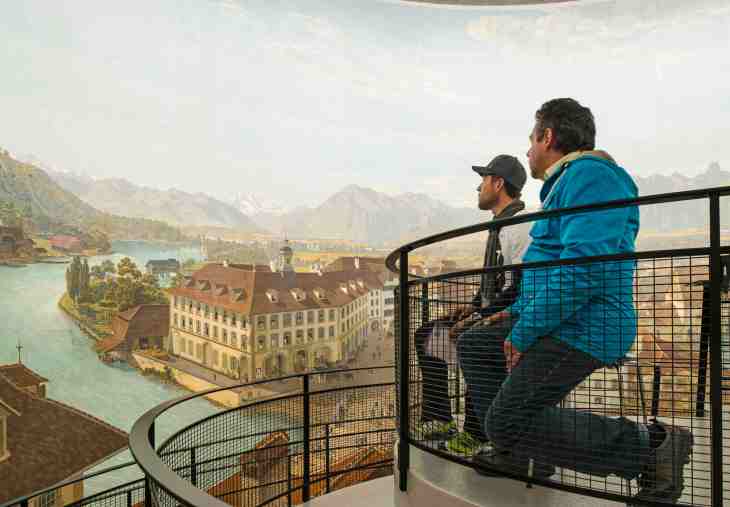
Thun Panorama Museum, Thun. © Interlaken Tourism
Back in Bern, if you’re looking for good food there’s no shortage of places. The Casino Bern has four restaurants under one roof. Jack’s Brasserie at the Hotel Schweizerhof is very good for classic French cooking. I also like to take museum patrons to the Hotel Bellevue Palace, where there’s a stunning bar and terrace, and a new Peruvian restaurant called Noumi.
If you want something a bit more unusual, though, head to the Reitschule – an alternative cultural centre in the old riding school near the train station. It’s the leading venue for concerts and club nights in the city. It has a lot of great pop-up restaurants. The place is edgy and experimental, for sure, but it’s definitely on the cultural map.
Enjoy an artistic autumn in Bern, with six unmissable exhibition at the Kunstmuseum Bern and the Zentrum Paul Klee. Book your overnight stay.
Discover a Swiss hidden gem in the charming boutique town Thun – the perfect combination of lakes, mountains and rich history. Book your overnight stay in Thun.
To find out more about Switzerland’s leading art museums and their upcoming exhibitions, visit the Art Museums of Switzerland website.
Unlimited access from just $16 every 3 months
Subscribe to get unlimited and exclusive access to the top art stories, interviews and exhibition reviews.



